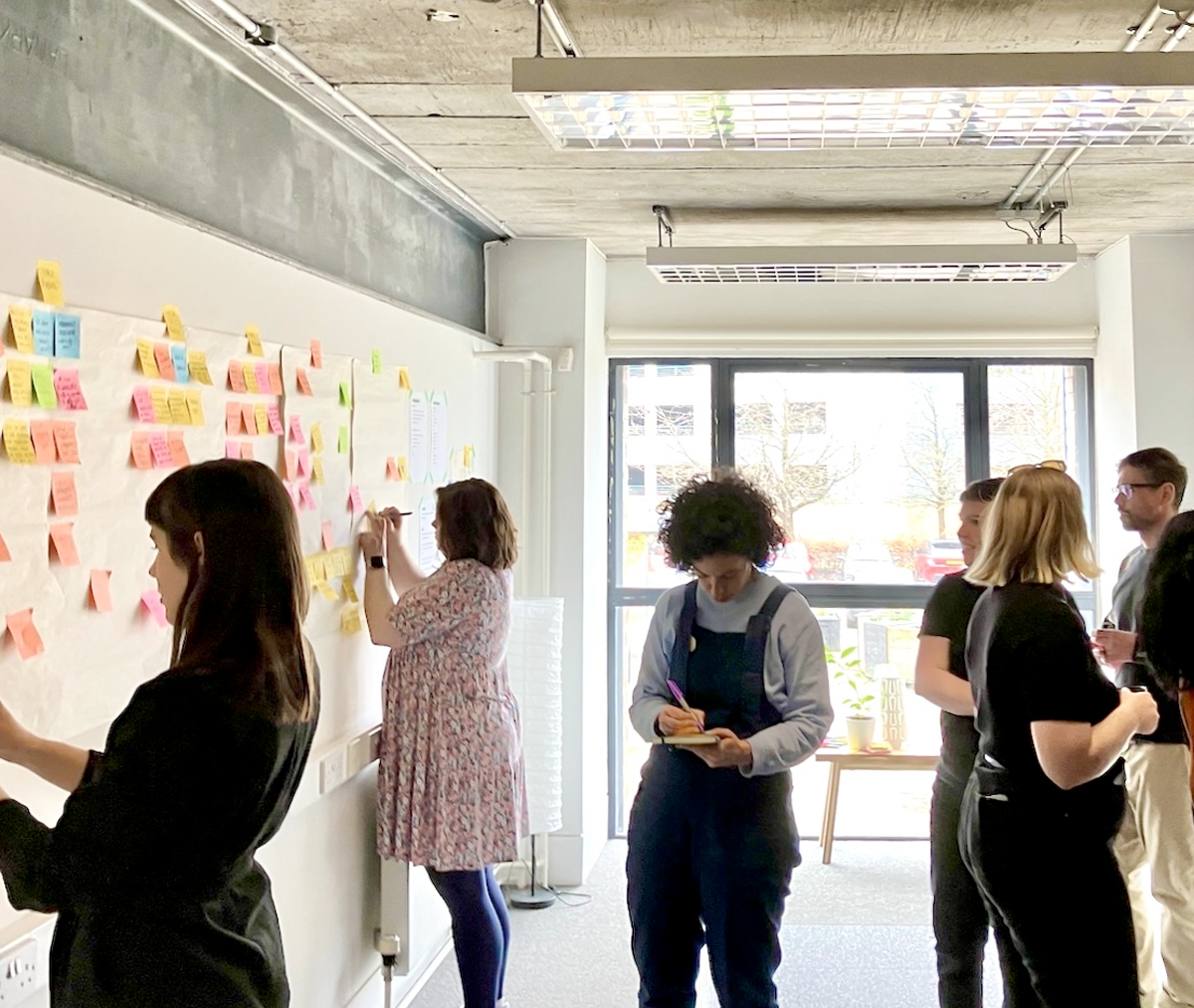Today, when I speak to executives, I get a sense of their tiredness with digital transformation efforts. It feels like a real slog to many, an uphill battle that will take longer than their tenure for increasingly marginal reward.
Similarly, when employees are polled their reaction, it’s usually one of two things. Either a heavy eye-roll when they realise they are about to endure additional responsibilities, or nervousness because they’re fearful and unclear about their jobs in a newly ‘transformed’ world.
I find these reactions interesting. Transformation, after all, should be in the realms of evolution, real chrysalis stuff. So why has it become so painful and where did the excitement go?
Perhaps its part semantics, part poor communication, part over promising and under delivering, and perhaps its initiatives that are rooted in a misconceived idea that transformation is a one time event that will take us to a new world where everything is better. This is clearly a problem for organisations that have real change to address and problems to rapidly solve.
In this article we wanted to explore some of the ways we’re taking a different approach to addressing these issues. You might call them design-led, design interventions, or just common sense but we’ve found they work both for larger transformational programmes and for more disruptive innovation efforts too like those we are used to at ZeroSixty.
Business transformation is not business as usual
This might sound counter-intuitive. Some argue that transformation efforts shouldn’t be separated from the day-to-day of business as usual. They may even suggest the idea that teams should continually be in this mindset, “it's how we should operate all the time!”. However, this is neither serious nor realistic when teams have to both perform to serve today’s customers whilst also looking to stepchange and operate differently for the needs of tomorrow.
Many organisations attempt to get around this by black-boxing transformation. This means having business transformation teams that are dedicated to specific efforts working without shackles - being appointed specific roles, budgets and resources to spearhead efforts. Whilst this helps organisations to focus efforts, it's also not without challenges. This is particularly problematic when there's a feeling from the rest of the organisation that transformation is being ‘done TO us’ rather than ‘with us’.
Where experience design can transform transformations
Whilst taking a customer-first or design-led approach to transformation isn't a new concept, for many it's still a challenge to implement on the ground.
At ZeroSixty we live and breathe the idea that design can be an enriching force in business, shaping promising futures, and igniting powerful ideas for what’s to come. We use design to create pioneering products and experiences, often in environments of technological and organisational complexity. We operate in the business of design, which means, creating category leading design & execution, and in the design of business: creating new value through transformation of the old.
Types of transformation and five overlooked approaches
When we look at the list of typical five types and reasons for transformation we can see that they increase in the aperture of change, from a focus on discrete business areas to more fundamental shifts across an organisation. Each, however, benefits from a design-led approach:
- 1. Business process transformation - “we need to automate, increase efficiency, and reduce costs”
- 2. Systems transformation - “we need to digitise, modernise the data and systems we use to be more efficient, competitive, and to scale in the future”
- 3. Business model transformation - “we need to reimagine or disrupt the way we are operating today for better value creation”
- 4. Domain transformation - “we need to move to a new category or find new ways of operating away from or in adjacency to our core business today”
- 5. Cultural & organisational transformation - “we need our people to fundamentally change how they work to build new capability, work in new ways, and be organised for future opportunities”
We typically see the biggest impacts of design-led approaches on business model, domain, and organisational types of transformation - but across all types the real value can be summarised by the following:
- Design helps to set-up and de-risk transformation efforts and spend in the right way
- Design teams help orientate multiple efforts and bind a larger organisational effort
- Tangible design create greater engagement and buy-in from both executives and employees
- Design efforts help keep transformation efforts on-track, by keeping strategic intent in-tact and often at a high-quality. It avoids spiralling costs and keeping teams honest
- Ultimately, design shows a better way, and inspires them to engage
Let’s take a look at five of our favourite (and typically overlooked) design-led approaches that help do this and keep business transformation efforts feeling like they have momentum, alignment, and engagement.
1. Framing and reframing the challenge
The recognised place to begin with transformation efforts is to start with the customer and work backward from there. This usually means spending some time carefully framing what the crux of the business problems is and understanding the real customer need. There’s no shying away from human-centred customer research here. We need to understand both the business and customer needs, identify behaviours, ‘whitespaces’ and ensure the opportunities in front of us are the ones worth pursuing.
This usually becomes a sticking point for organisations who start with technology, believing that implementing new platforms and new journeys to go alongside them will bring rapid cost savings. This can in many cases be true. New platforms can make things more efficient, allow new processes, digitise information and tacit knowledge, and lead to employee headcount reduction. It doesn't, however, always target the core customer problem.
The common trap is not spending enough time on thinking about and defining the real step-change in the customer experience. We advocate for a more continual framing and reframing of the customer and organisational problem, revisiting when we gain more information from research, or as a result of the feedback we receive on the vision. Without this, technology platforms may bring some benefits but only lead to incremental change in the long run - more catching up rather than creating true advantage.
2. Creating a tangible lodestar for change
We can’t overstate the importance of this one. Perhaps the greatest intervention design can have in transformation efforts is creating a tangible vision of the future. This typically might be through deeper service design efforts and depictions of future customer journeys but we advocate going further.
We believe prototypes win arguments, bring executives on board, and create excitement that people can rally around. When the prototypes are of a level of quality that makes a vision of the future not only credible, but also exciting, the path of change suddenly becomes clearer and in turn we have a picture of the destination and a means to break down the components of how we get there. They also by their nature allow us to test ideas relatively cheaply before spending significant budget on bigger technology programmes.
3. Taking co-design seriously
When we worked with a large USA based facilities management group we made a point of involving leaders and employees of different levels in workshops to not just user research their internal transformation needs, but also involve and co-design with them. This means going beyond typical user research observation and surveying. A co-design effort involves teams, creates a stake in the change, excites them with prototypes and visions that have hopefully already been developed but also uses diverse inputs to ensure solutions are really fit for purpose and have considered outlying but important use cases and unintended consequences.
Crunched timelines and eagerness to see change can often mean co-design feels like a luxury, but we find that it leads to greater impact and solution longevity.
4. Proving small first
Most transformation programmes are naturally sold as large multi-month or even year endeavours. We believe in moving rapidly using the techniques above but also proving success in small areas first. As the old adage of ‘eating elephants' goes, taking one bite at a time and taking small steps to build capability, engage teams, create momentum and show success to the executive teams often goes much further than months of waiting and promising change in status reports.
5. Focus on capability building
We often find that organisations can be caught in a limbo - knowing they need new capability, but facing a lag time to be able to develop it. When helping to build capability for a number of our past clients specifically in the design function we’ve focused on fractional and transitional skill building and acquiring.
Focusing on capability in addition to functional technology and customer journey implementation ensures that teams understand the ‘why’ and ‘how’ in addition to the ‘what’ of transformation. This might mean teams need to work in new ways, carefully selecting which new and old methodologies still work for them, designing communication programmes to train and engage are considered in more depth, and implementing continuous insight, design and research functions to be able to continue to reframe and spot new opportunities.
Conclusion: Re-energising transformation efforts
It’s easy to forget that in the heat of lots of coordination, planning, evaluating, and alignment that the organisation and executives still need to feel energised about the journey they are on. By creating energy through framing and reframing, starting small, creating a powerful and tangible lodestar to orientate and guide, co-designing with teams and even customers, and focusing on capability building we believe transformation doesn’t have to feel hard to grip and control, and we know it will feel a little less boring.
For more information on our offering and how we use these specific design-interventions to transform the organisations we work with, take a look at our offering here.




